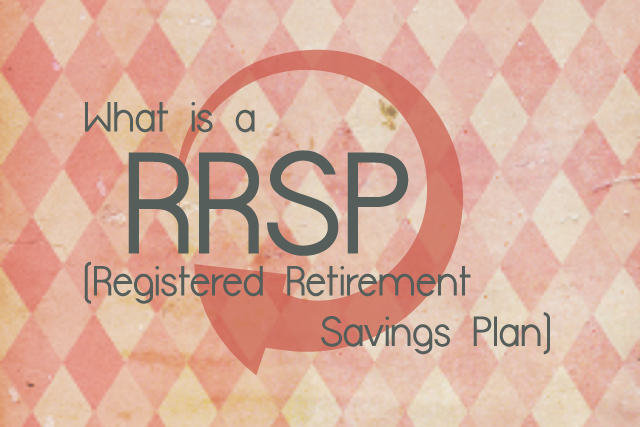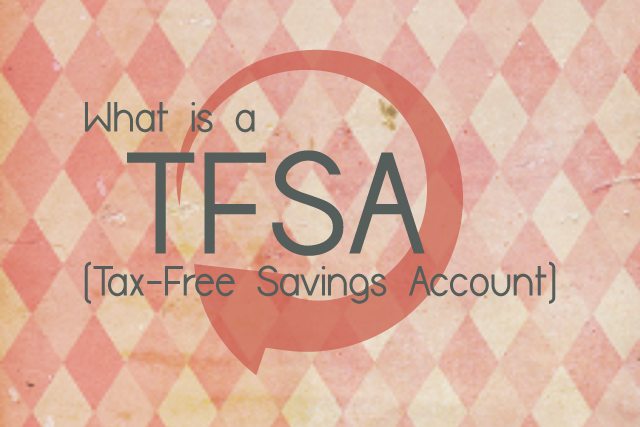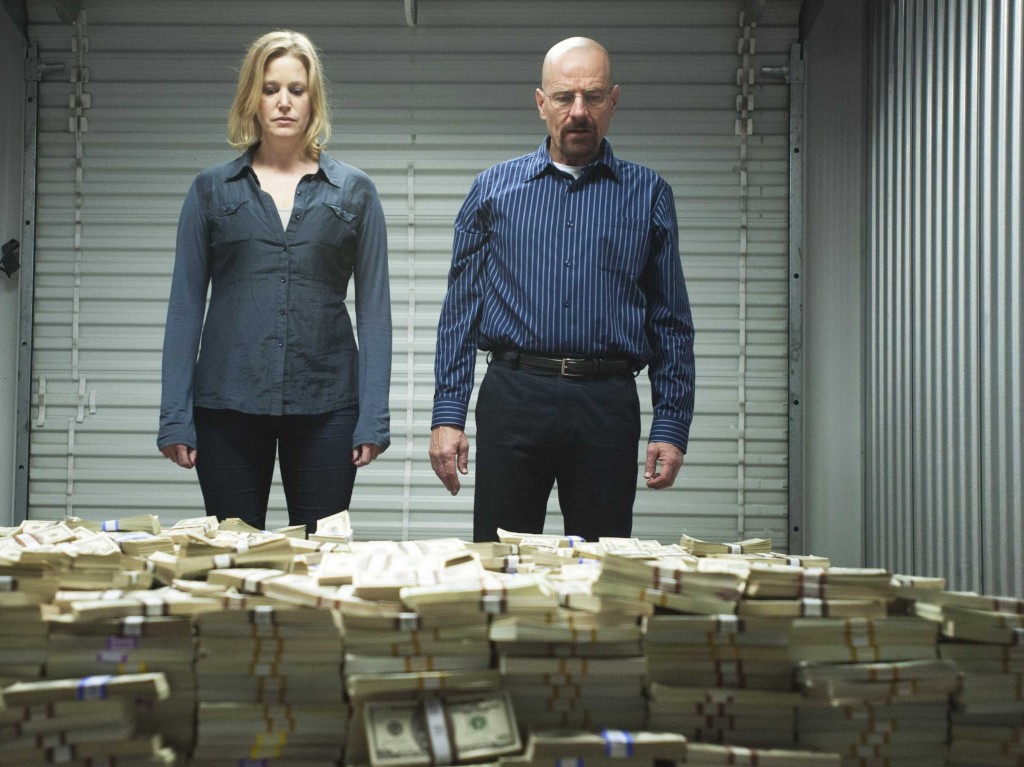Financial literacy month has been pretty successful so far in my books. I’ve been forced to sit down and take a look at a few things that I haven’t given enough consideration to. Last week we took a look at the Tax-Free Savings Account. This week, I’m going to be trying to decode the letters behind the RRSP.
So here we go- round two: A beginner’s guide to the RRSP.
What is the RRSP?
The Registered Retirement Savings Plan (RRSP) was introduced in 1957 as a vehicle to promote retirement savings for Canadians. The guidelines governing its use are outlined in the Canadian Income Tax Act and detail the rules around contributions, taxed implications and withdrawals.
In short, a RRSP allows for the following:
- Tax Deductible Contributions. When you contribute to your RRSP, the amount that is contributed is deducted from your earned income which results in a tax credit. For illustration purposes, if my marginal tax rate is 30%, I will get a credit of $300 for every $1000 I contribute.
- Tax-sheltered growth. Gains from interest or investments are not taxable while kept within the account.
- Tax deferral. Taxes are paid when funds, both contributions and gains, are withdrawn from the account. The amount of tax is dependent on your marginal tax rate at the time of withdrawal. For illustration purposes, if my tax rate is 20%, I will owe $200 in taxes for every $1000 I withdraw.
There are a few different types of RRSP accounts that can be opened. The most common are:
- Individual RRSPs- just like it sounds- it’s your account and yours only.
- Spousal RRSPs allows for a higher earner to contribute to a lower earning partner’s RRSP.
- Group RRSPs are arranged by employers for their employees. Contributions can be made through regular payroll deductions and are managed by a company appointed to administer the group account. Employers will sometimes match contributions.
RRSPs can be opened at any bank as well as investment brokerages. The money within the plan can be used to buy various types of qualified investments which include stocks, ETFs, and GICs.
The Ground Rules
The RRSP is an account registered with the Canadian Federal Government. They keep track of how much can be added to the account and tax on the withdrawals. Here are a the ground rules of RRSPs:
- You must be under 72 years old to contribute to a RRSP.
- Contributions to the RRSP must be made within 60 days after the end of the calendar year. This usually falls on March 1 or Feburary 29 in a leap year.
- Contribution room in a RRSP is calculated through previously filed tax returns and is dependent on the earned income reported in the last year.
- Money is meant to be drawn upon retirement but can be withdrawn earlier if required. Early withdrawals are taxed as income earned during that year.
- You will no longer be able to contribute to a RRSP once you turn 72 years old. The RRSP will be converted to an account called the Registered Retirement Income Fund (RRIF) upon which it will begin to pay your retirement income. You can also choose to convert your RRSP to an RRIF before you turn 72.
- If there are funds left over in the RRSP upon death, the remaining money will go to a designated beneficiary (person of your choosing) or to your estate.
Contribution Limits: How much money can I put into a RRSP?
The RRSP contribution room is also known as the RRSP deduction limit. After filing your taxes, the CRA will specify the deduction/contribution limit for the subsequent year on your Notice of Assessment. Your limit for 2013 will be shown on your notice for 2012 and is determined by the lesser of the following:
- 18% of your earned income from the previous year, or
- The maximum contribution amount for the current tax year. For 2013, that amount is $23,820.
Scenario 1: If your income reported in 2012 was $50,000, you can contribute up to 18% of your income, which amounts to $9,000, into your RRSP in 2013.
Scenario 2: If income reported in 2012 was $150,000, 18% of your income is $27,000. Therefore, you can contribute the maximum 2013 limit of $23,820 into your RRSP and not 18% of your earned income.
If you are a member of a pension plan or if your employer matches your RRSP contributions, you will be subject to a pension adjustment that will reduce the amount that you can contribute to your RRSP. This is reflected on the Notice of Assessment.
If you are unable to contribute the maximum amount into your RRSP in any given year, don’t worry. You do not lose the contribution room. Unused contributions are carried over and can be contributed into the RRSP in subsequent years. As such, RRSP contribution room for 2013 may exceed $23,820 if unused contribution room is being carried over from previous years.
Scenario 3: If my maximum allowed contribution for 2013 is $9,000 (from Scenario 1), but I only contribute $5,000 in 2013, I will be able to carry forward $4,000 to be contributed in a future year.
Penalties: What if I put in too much?
It is possible to contribute more into the RRSP than allowed. In that case, a penalty will apply. The government is lenient and provides an overcontribution buffer of $2,000. If you contribute more than the RRSP deduction limit by more than $2,000, you will have to pay a tax of 1% per month on the extra amount that exceeds the limit.
Withdrawals: How much money can I take out of my RRSP?
The Wrong Way
You can withdraw any amount from your RRSP at any time, however, this is discouraged since the purpose of the RRSP is to save for retirement. When you make an early withdrawal from your RRSP, the financial institution will withhold taxes on the amount withdrawn and pay the government on your behalf according to the following rates:
- 10% on amounts less than or equal to $5,000;
- 20% on amounts greater than $5,000 and less than or equal to $15,000; and
- 30% on amounts greater than $15,000.
The tax withheld may not be enough to account for the amount of tax that you owe at your tax bracket. Be prepared to pay more taxes on the amount withdrawn when you file your return for that year.
Scenario 1: If I make an early withdrawal of $5,000, the bank will withhold $500 (10%). At the 30% tax bracket, I would still owe 20% in taxes on the amount I took out.
It’s also important to note that once you’ve taken money out of a RRSP through an early withdrawal, you lose that contribution room and cannot re-contribute that amount back into the RRSP.
The Right Way
There two instances where you can withdraw funds from your RRSP and be exempt from taxes: Home Buyers’ Plan and Lifelong Learning Plan.
Home Buyers’ Plan (HBP) allows you to borrow up to $25,000 from your RRSP to buy or build your first home. You have to make annual payments and repay all withdrawals to the RRSP within 15 years.
Lifelong Learning Plan (LLP) allows you to borrow up to $10,000/year up to $20,000 from your RRSP to pay for tuition costs for you or your partner. It cannot be used to pay for your children’s education. Repayments to the LLP don’t have to start until five years after the first withdrawal. Once a repayment has been made, you have 10 years to return the money to the RRSP.
Under these programs, the money withdrawn is not included as income on your tax return. Funds that are to be withdrawn must have been in the RRSP account for at least 90 days prior to withdrawal. If an annual repayment is missed, it will have to be included in your income when you file your taxes for that year.
Update: You cannot own the home for more than 30 days prior to making a withdrawal under the HBP. Money intended for use with the HBP must be deposited in the RRSP account more than 60 days before the closing date of your home purchase. (Thanks Kelly for the tip!)
The Retirement Way
Once you turn 72 or consider yourself retired (whichever comes first), there are three ways to start receiving income from your RRSP without having to pay withholding taxes.
- You can convert the RRSP to a RRIF. This will allow your investments to continue to grow tax free, however, you will no longer be eligible to make contributions. You will be withdraw the annual minimum amount indicated in notice sent by the government. Amounts taken out are considered as income and will be taxed.
- You could use the money to purchase an annuity. An annuity pays a set income for a predetermined number of years or the rest of your life. The amount paid from the annuity is considered as income and will be taxed.
- You could cash in all the chips and take it all out at once. If you take out all the money in your RRSP, it is considered as income and the full amount withdrawn will be taxed.
If you retire and don’t need the income from the RRSP, you have until you turn 72 years of old before deciding on what to do with the money stored in the RRSP.
Bringing it back
The RRSP is a good way to jump start your savings towards retirement as it provides tax sheltered growth on pre-tax dollars. It also allows access to savings should you need to buy a home or want to seek further education. Assuming that your retirement years will be spent earning less income, the amount withdrawn as retirement income will be subject to lower taxes paid to the government and result in more money in your pocket.
How much do you think you should contribute to your RRSP?





Great high level summary! Where was this article 10 years ago??? I almost did my HBP incorrectly, forgetting about the 90 days the money has to be in the RRSP before being withdrawn, and the fact that you cannot own your house for more then 30 days when you make your HBP withdrawl. That means if you put the money into your RRSP less than 60 days before buying your home, you are cooked. Even at 61 days, there are processing days to account for. Plan accordingly!
A note about the $2000 overcontribution buffer: it can be used to your advantage — as long as you’re confident you don’t need that buffer to actually save your bum in an overcontribution. In my case, I bought my first home when I was quite young and even after maxing out my RRSP contributions, I was not close to my $25K HBP loan. So I overcontributed the $2000 on purpose and took it out with the HBP.
I’m glad to hear that the HBP worked out in your favor. I didn’t know about the 30 day requirement and have updated the section with the information. I read that the overcontribution used to be $8k but was reduced to $2k after people kept using the buffer to their advantage. Nothing wrong with that; it’s too bad that limit was reduced before we could use it. Does that mean you have to repay the $2k buffer that was withdrawn as part of the HBP or are you in the clear since it was removal of an overcontribution? Thanks for sharing Kelly!
The $2K is treated just like a regular contribution that needs to be repaid since I withdrew it as part of my HBP. I guess if you’re about to retire, and you haven’t used your $2K then you could throw it in during your last year of high income and get a little more of your last tax rebate. Or at any other time you think you will be earning a higher income.
Good to know. I’ll have to keep that in mind and make sure to use up that buffer one day. Every little bit helps.